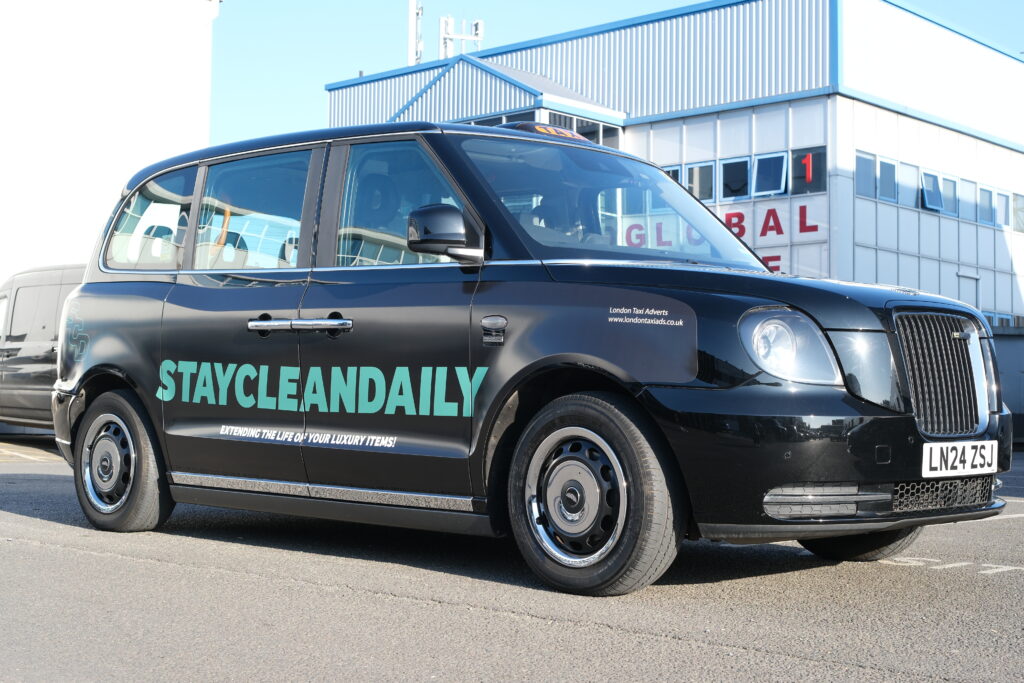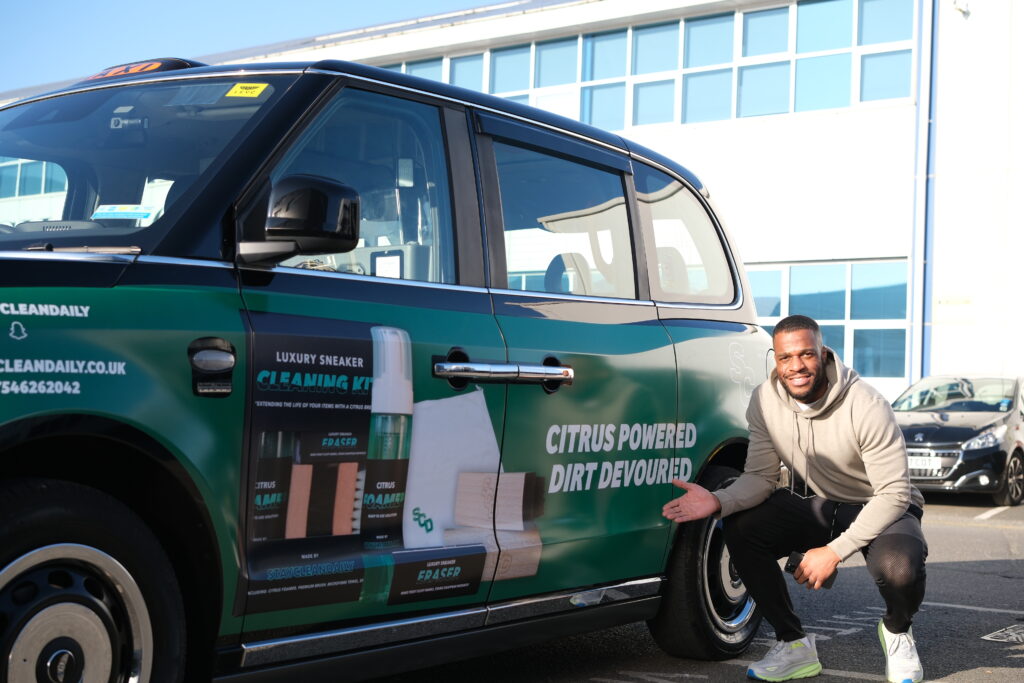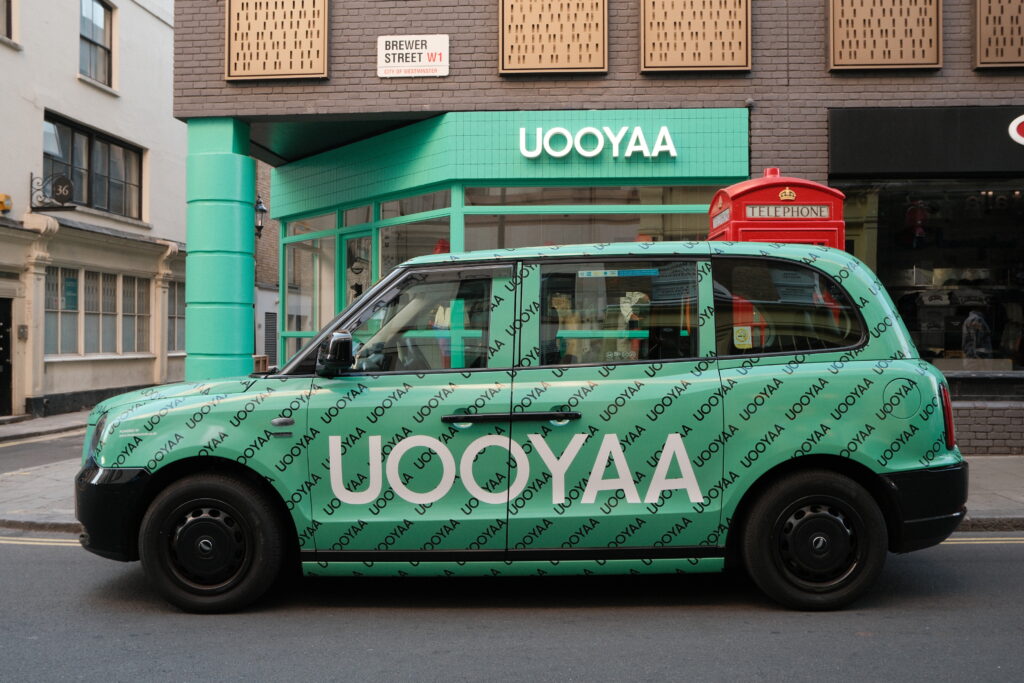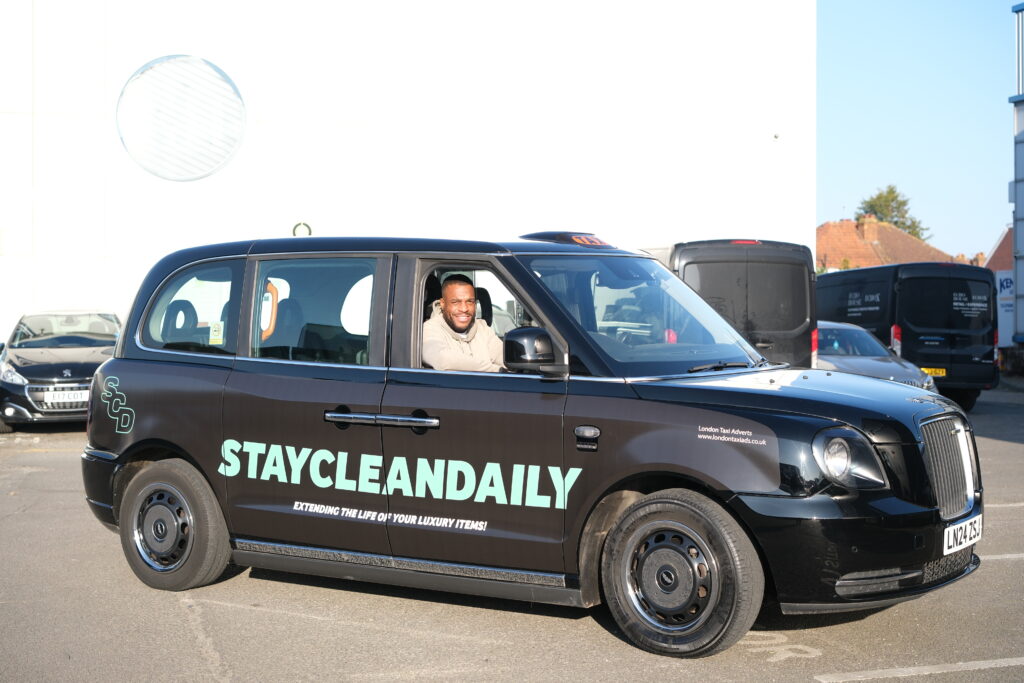In London’s crowded adscape, attention is currency, and most brands are going broke. With consumers hit by over 3,000 messages a day, traditional digital campaigns are losing their edge. Research shows 83% of consumers recall out-of-home ads or taxi ads just before making a purchase.
A branded London taxi cab pulls up at that moment. Layer in social media ads, and you’ve created a full-circle experience that sticks, converts, and scales. Brands are owning both the curb and the algorithm with taxi advertisements.
The Changing Face of Advertising in London

London’s advertising landscape has evolved rapidly in recent years. Between 2023 and 2024 alone, licensed vehicle numbers rose by 8.2%, expanding the reach and visibility of taxi advertising across the city. At the same time, digital advertising is facing serious headwinds from ad blockers and privacy regulations to growing consumer fatigue.
This shift has opened the door for smarter, blended strategies. Taxi advertising London campaigns are now forming the backbone of integrated approaches that span both the physical and digital worlds. The iconic London taxi cab offers unmatched geographic reach, something static billboards simply can’t replicate.
What’s driving this shift? A clear insight: consumers move through environments. They see outdoor media, scroll social feeds, and make decisions across multiple touchpoints. Successful advertising in London now means being present in both realms, seamlessly and strategically.
Why Taxi Advertising Delivers More Than Just Reach?
Taxi ads offer a unique set of advantages that make them ideal for multichannel campaigns. Unlike traditional OOH formats, taxis are always in motion, actively entering high-traffic zones and adapting to real-time audience flow. That mobility drives results.
Top-performing London taxi advertising company campaigns go beyond just wrapping a vehicle. They use smart placement strategies, factoring in time of day, routes, and neighbourhood demographics to deliver impressions that matter. It’s about visibility to be seen by the right audience at the right moment.
1. Turning Movement into Momentum with Social Media
Social media ads excel at pinpointing interests, behaviours, and demographics. But to avoid the risk of being ignored, pair them with physical presence to gain power.
Taxi ads prime the audience. When someone spots your branded London taxi cab during their commute, they’re more likely to recognise and engage with your social content later. That physical first interaction warms up digital touchpoints.
This strategy works in two directions:
a. From taxi to social: Eye-catching taxis can include QR codes, branded hashtags, or campaign handles that drive users straight to your content.
b. From social to taxi: Geofenced social media ads can retarget people in areas where your taxis have been operating, reinforcing the message and increasing conversion likelihood.
Location-based targeting becomes even more potent when aligned with taxi routes. If your fleet moves through Shoreditch or Southbank, your social ads should echo that local presence, creating a layered brand story.
2. Unified Creative = Stronger Brand Recall
One of the most overlooked benefits of integrating taxi and social ads is creative consistency.
When your taxi ad design aligns with your social media visuals, voice, and messaging, it sends a unified signal. Whether someone sees your brand on a moving cab or a mobile screen, the experience feels connected. That kind of cohesion builds trust, credibility, and long-term brand memory.
Consumers don’t differentiate where they saw you — they just remember how often they did—the more connected the touchpoints, the stronger the impact.
3. Maximizing ROI with a Sequenced Strategy
The most effective campaigns don’t just launch taxi ads and social media ads at the same time. They build a strategic sequence that guides consumers from first impression to final action.
This sequencing takes into account how each medium plays a different role in the customer journey. Taxi advertising drives awareness and builds brand familiarity in the physical world. Social media ads are optimized for engagement, lead generation, and conversion.
Where Each Channel Delivers Its Strength
Taxi ads shine in the awareness stage. Their high visibility across London creates trust, recall, and brand authority. Social media ads excel mid-funnel, turning curiosity into action.
By mapping these strengths across the customer journey, marketers can fill visibility gaps, reinforce messaging, and guide users from discovery to decision.
1. Smarter Budgeting Across Channels
Budget allocation is where strategy meets performance. Outdoor advertising in the UK typically requires a larger upfront investment but offers consistent, citywide exposure over weeks or months. Meanwhile, social media ads provide flexibility, audience testing, and real-time optimizations.
The smartest campaigns balance both:
- Invest in taxi advertising for high-recall visibility that builds a foundation of trust.
- Use social ads to capitalize on that awareness and drive measurable actions.
- Think of it as branding at scale with performance built in.
2. Measure What Matters: Tracking the Combined Impact
Running these campaigns in tandem unlocks data you can’t get from siloed efforts. When executed strategically, brands can track:
- How does taxi ad exposure boost social engagement?
- How do social ad interactions affect foot traffic or web sessions?
- How do combined impressions impact brand lift and purchase intent?
Many London taxi advertising companies now offer GPS route data and impression tracking, which can be paired with platform analytics from Instagram, Facebook, or LinkedIn to paint a full picture of ROI.
Overcoming Common Challenges in Integrated Campaigns

Integrated campaigns promise higher ROI, but they also come with a learning curve. From managing creative across formats to syncing media schedules, the logistics can quickly get complicated. The brands seeing success today are the ones who’ve figured out how to simplify the complexity.
1. Do You Need Multiple Agencies?
A common concern for brands is whether running a hybrid campaign requires coordinating multiple partners. Fortunately, many of the best taxi advertising companies in London now offer end-to-end services such as taxi wraps, social media ad planning, and execution. This integrated approach simplifies coordination, ensures consistent brand messaging, and reduces time to launch.
2. Budget Limitations? Start Smart and Scale
Budget is another hurdle, especially for smaller brands or startups. But integrated advertising doesn’t require a massive upfront spend. Start with a focused taxi advertising London campaign in key postcodes or high-footfall areas.
Then complement it with targeted social media ads aimed at those same geographic or demographic segments. This phased approach allows for measurable testing and incremental scaling.
3. Aligning Timing Across Channels
Timing is everything. Running taxi and social media ads without synchronization can dilute the impact. The most successful campaigns align launch windows so social ads reinforce physical impressions.
4. Designing for Two Worlds
Creative execution must be channel-specific while staying brand-consistent. Taxi ads demand bold, clean visuals and minimal text to grab attention in motion. Meanwhile, social media ads can carry richer storytelling, video, carousels, or interactive CTAs. The key is to establish a flexible core message that adapts fluidly between physical and digital formats.
How to Measure Impact and Optimize for Growth?

You can’t improve what you don’t measure. To unlock full ROI from taxi and social ad campaigns, brands need smarter tracking, sharper insights, and a clear path from data to action.
1. Go Beyond Impressions: Measure Cross-Channel Behaviour?
Traditional KPIs like impressions and reach provide a starting point. But the real insights emerge when brands track how exposure across one medium influences behaviour on another.
For example:
- Website visits increase in neighbourhoods where taxis are active
- Social engagement spikes among users exposed to both touchpoints
- Conversion rates improve when users encounter the brand multiple times across formats
3. The “Lift Effect” of Dual Exposure
Integrated campaigns consistently deliver better results than standalone efforts. Brand awareness studies show that consumers exposed to both taxi ads and social media ads exhibit significantly higher recall, trust, and purchase intent compared to those who’ve only seen one.
This lift effect validates the compounding value of multitouchpoint marketing — and it’s measurable.
4. Use Digital Tools to Track Offline Influence
Modern analytics platforms and outdoor advertising companies now offer tools that bridge offline and online data. GPS-based taxi movement reports can be overlaid with Google Analytics, Meta Ads Manager, or CRM data to reveal:
- Location-based traffic surges
- Time-of-day interaction spikes
- Lead source correlation across channels
This data-driven approach ensures continuous optimization and strategic recalibration.
Rethinking ROI: It’s a Long Game
While taxi advertising may not yield immediate clicks, its role in boosting the performance of digital channels is often underappreciated. Think of it as a brand trust multiplier. The brands that win long-term don’t view taxi and social ads in silos — they treat them as a combined investment in visibility, authority, and conversion readiness.
What’s Next: Future Trends and Opportunities?

The marketing landscape is evolving fast, and integrated campaigns are only getting smarter. From AI-driven optimization to interactive taxi ads, here’s where forward-thinking brands are heading next.
1. Smarter Tech Is Powering Smarter Campaigns
The landscape of outdoor advertising companies is rapidly evolving, thanks to emerging technologies that make integration smoother and smarter. Digital taxi screens now allow real-time content updates, meaning brands can sync physical displays with live social media ads, seasonal messaging, or location-based promos — all in real time.
2. AI and Automation Are Rewriting the Playbook
Artificial intelligence and machine learning are beginning to reshape how cross-channel campaigns are managed. These systems can analyze performance metrics from both taxi and social media channels, then auto-adjust budgets, optimize timing, and test creative variations — all to improve ROI and reduce manual guesswork.
3. Privacy Constraints Are Reinforcing Physical Reach
With stricter privacy laws limiting how platforms use user data, location-based social media targeting is becoming more complex. Taxi advertising in London offers a privacy-compliant way to reach geographically relevant audiences, giving marketers a reliable way to maintain reach without breaching regulations.
4. Interactive Tech Is Bridging Online and Offline
New tools like QR codes, AR triggers, and NFC tags on taxis are turning static wraps into dynamic experiences. A quick scan or tap can link consumers to immersive social content, special offers, or branded experiences.
Build a Brand That Travels and Converts
In London’s saturated media market, taxi ads combined with targeted social media are a competitive edge. This integrated approach blends street-level presence with algorithmic precision, unlocking greater ROI, stronger recall, and real-world engagement. It’s the strategy modern brands need to cut through clutter and stay top of mind.
Success lies in strategic sequencing, consistent brand storytelling, and cross-channel performance tracking. The brands leading London’s marketing scene aren’t choosing between physical and digital. They’re blending both and winning because of it. It’s time to make your brand move, convert, and stick. Want to turn heads and win hearts? We’ve got taxis waiting and ads ready to go.
FAQs
1. How effective are taxi ads for brand visibility in London?
Taxi ads boost brand visibility in London by reaching thousands daily. A branded London taxi cab moves through busy areas, creating strong local awareness. Pairing it with social media ads increases brand recall across both physical and digital spaces.
2. What makes taxi advertising in London stand out?
Taxi advertising London gives your brand constant streetlevel exposure. Unlike static billboards, London taxi ads move through high-traffic areas. It’s one of the most flexible outdoor advertising UK options with high impact and visibility.
3. Can social media ads improve taxi ad performance?
Yes, social media ads can retarget or reinforce your taxi advertising message. This combo creates multiple brand touchpoints, improving recognition, engagement, and conversion. It’s ideal for brands looking to stay visible both online and offline.
4. Which businesses should use taxi ads and outdoor advertising companies?
Retail, real estate, events, and luxury brands see strong results. Outdoor advertising companies help combine taxi ads and digital campaigns to maximize reach in busy urban areas like London.